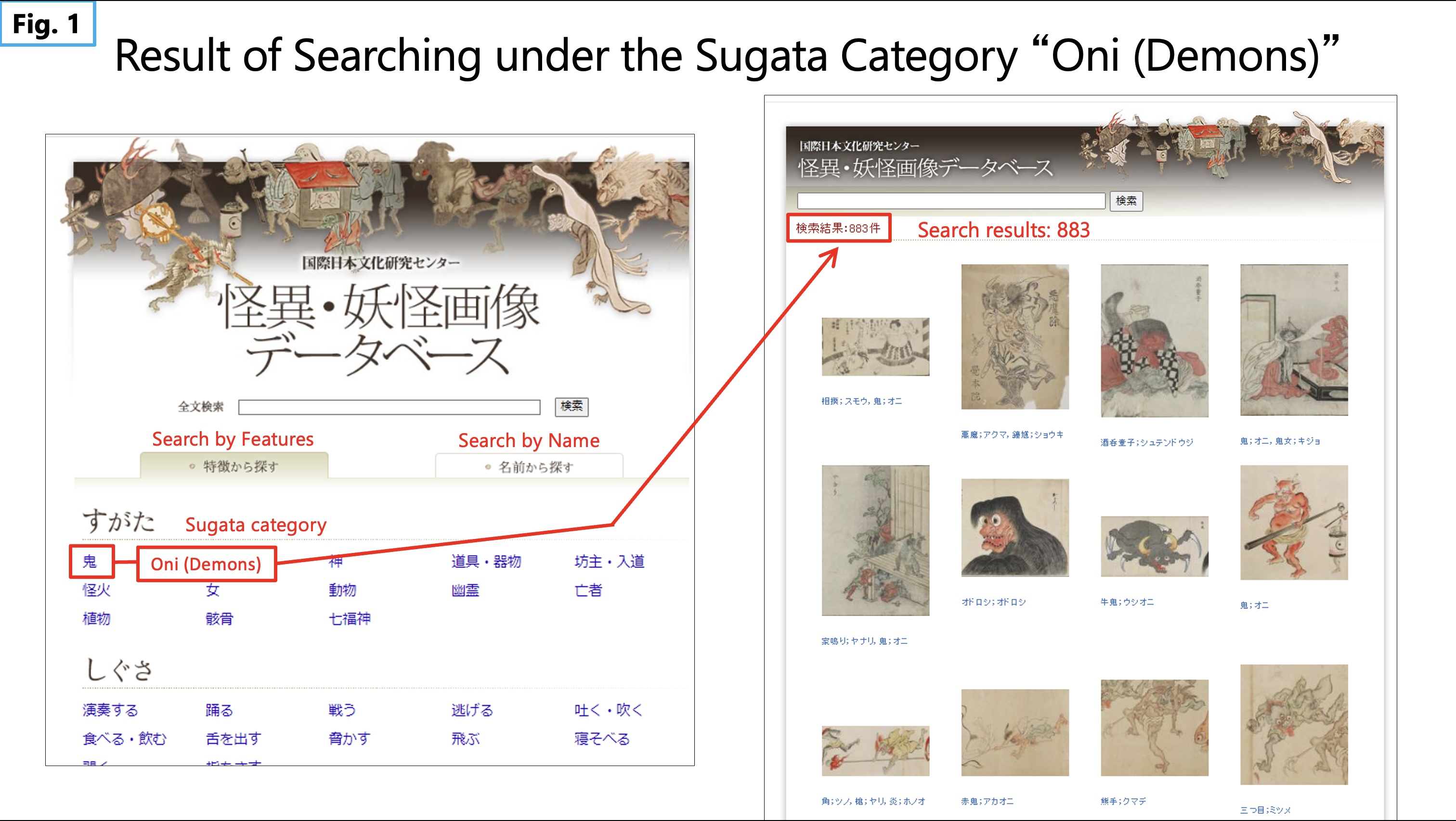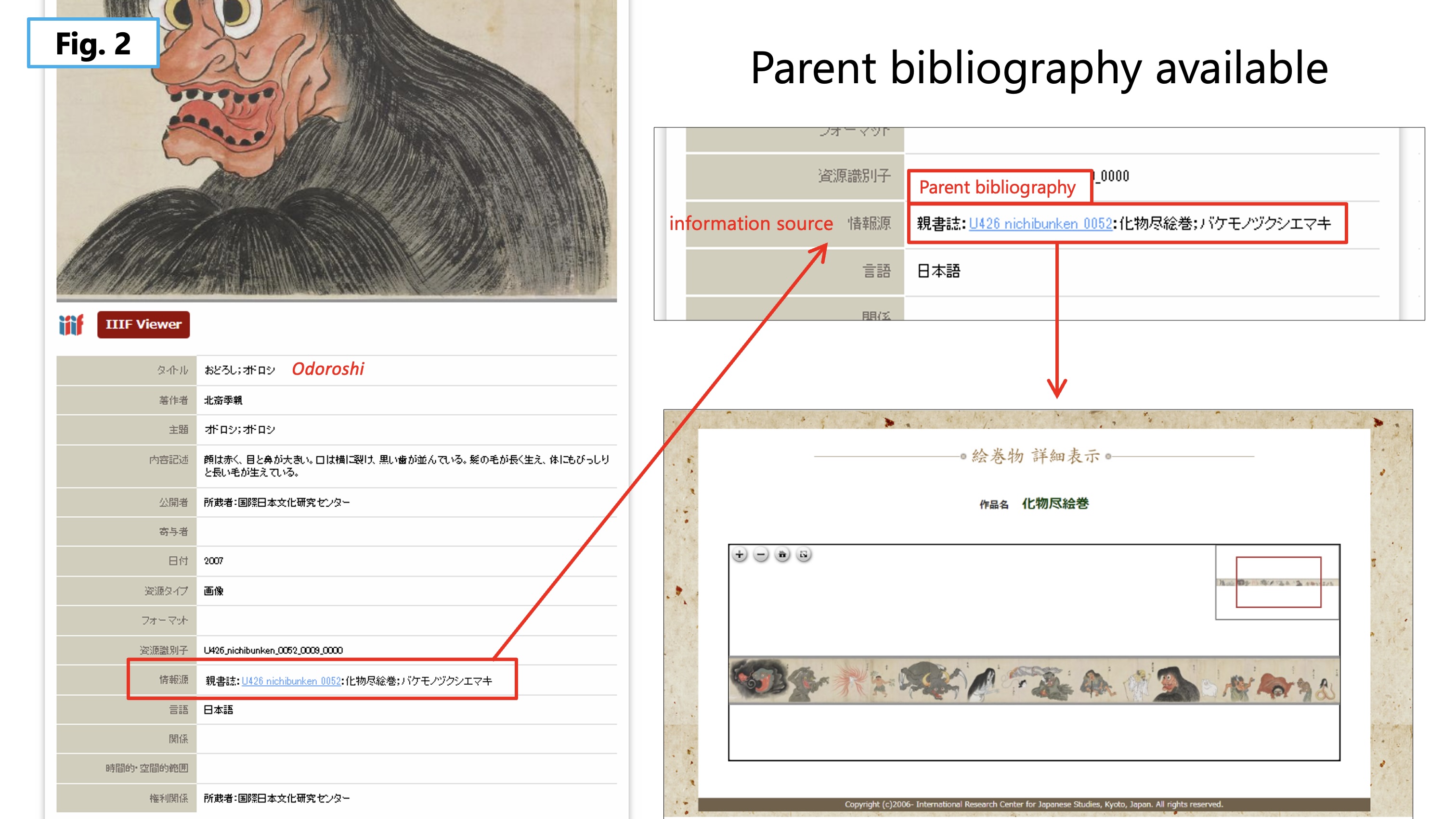 |
 |
 |
 |
The Database of Paintings of Mysterious Phenomena and Yōkai (Ghosts, Monsters, Spirits)
The Database of Paintings of Mysterious Phenomena and Yōkai (Ghosts, Monsters, Spirits)
|
 |
 |
Yōkai Image Database Overview |
|
The Yōkai Image Database is a collection of yōkai depictions found in pictorial sources,
first released in June 2010. Initially, due to copyright restrictions, the database only included visual
materials related to yōkai and mysterious phenomena from the Nichibunken collection.
However, it has since expanded to include materials from museums and art galleries both within Japan and internationally.
Bibliographic information about the original sources, including books and journals, is also provided.
As of August 2022, the database contains 480 resources.
|
 |
 |
 |
 |
Search Features |
|
The database offers two main search methods: “Search by Features” and “Search by Name.”
1. Search by Features
This method allows users to find yōkai based on their characteristics without needing to know their names.
The initial search screen lists attributes organized into categories such as:
Sugata (Type): Categories include Oni (Demons), Mushi (Insects), Kami (Deities), and Dōgu/Kibutsu (Tools and Implements). Shigusa (Action): Includes behaviors like musical or other performances, eating, and drinking. Katachi (Shape): Focuses on physical features such as fingers, toenails, tusks, and horns. Mochimono (Possessions): Includes items carried by yōkai. Iro (Color): Covers the colors associated with yōkai.
 For instance, searching under the Sugata category “Oni” (Demons) returns 883 results (Fig. 1). For instance, searching under the Sugata category “Oni” (Demons) returns 883 results (Fig. 1).
2. Search by Name
This method allows users to explore cut-out images of yōkai arranged alphabetically in Japanese (gojūon) order.
The database includes 194 yōkai names. For example, searching for “Odoroshi” retrieves:
Isolated images of the yōkai. Title of the illustration. Artist’s name. Characteristics of the yōkai. Holding institution (e.g., museum or archive).
 The Odoroshi is a yōkai depicted in the Bakemono-zukushi Emaki (Illustrated Index of Ghosts and Spooks) scroll (Fig. 2).
Users can view the scroll in its entirety on the Nichibunken Emakimono Database. The Odoroshi is a yōkai depicted in the Bakemono-zukushi Emaki (Illustrated Index of Ghosts and Spooks) scroll (Fig. 2).
Users can view the scroll in its entirety on the Nichibunken Emakimono Database.
|
 |
 |
 |
 |
Integration with IIIF Standards |
|
As of August 2024, parts of the database are linked to archival collections,
Nichibunken Digital Archive that comply with IIIF (International Image Interoperability Framework) standards. This integration allows users to view high-resolution images seamlessly.
The IIIF button on the search screen provides access to this feature.
|
 |
Accessibility |
|
One notable feature of the Yōkai Image Database is its emphasis on visual materials,
making it accessible even with minimal language input.
Although the search interface is in Japanese, we encourage you to explore and make use of this valuable resource.
March 2025
Professor Manami Yasui, Ph.D. and Professor Shoji Yamada, Ph.D.
Yōkai Project Office, International Research Center for Japanese Studies
|
|
 |
 |
| Copyright (c)2010- International Research Center for Japanese Studies, Kyoto, Japan. All rights reserved. |
|

